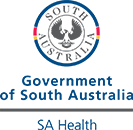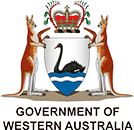Hypoglycaemia (low blood sugar)
If someone is unconscious or drowsy, and you know they have diabetes, treat this as severe hypoglycaemia. Do not give the person anything to eat or drink. Put them into the recovery position, call triple zero (000) and ask for an ambulance. If the person has a glucagon injection and you know how to use it, you should administer it.
Key facts
- Hypoglycaemia is when you have too little glucose (sugar) in your blood.
- People with diabetes who take medicines to lower their blood glucose level can be at risk of having a hypoglycaemic episode (known as a 'hypo').
- Symptoms of a hypo include feeling shaky, light-headedness, sweating and irritability.
- If a person with diabetes is having a hypo and is not drowsy or unconscious, treat it quickly with glucose (for example, with jelly beans or some honey).
- If hypoglycaemia gets worse, you can become unconscious or have a seizure and will need emergency care.
What is hypoglycaemia?
Hypoglycaemia (hypo) is when you have too little glucose (sugar) in your blood. A blood glucose level lower than 4 mmol/L is considered hypoglycaemia.
Hypoglycaemia is most common in people with diabetes who take insulin or some oral diabetes medicines.
What symptoms are related to hypoglycaemia?
Hypoglycaemia affects different people in different ways. If you have diabetes, you will learn over time how it feels for you.
If you are having a hypo, you might:
- feel shaky or sweaty
- feel weak, dizzy or light-headed
- feel very hungry
- have tingling lips, tongue or cheeks
- feel that your heart is beating faster
- have blurred vision
- feel irritable, nervous or tearful
If your hypo becomes more severe you might:
- become confused
- have slurred speech
- behave strangely, or look like you are drunk
- have a seizure
- become unconscious
If you feel any of these symptoms, check your check your blood glucose level (BGL). If your BGL is below 4mmol/L you should have some quick-acting glucose.
If you cannot check your blood glucose level, you should treat these symptoms as if you are having a hypo.
Hypo unawareness
Some people don't have symptoms with early hypoglycaemia, and only realise they are having a hypo after checking their blood glucose level or experiencing severe symptoms. This is more likely in people who have had diabetes for a long time.
This can be dangerous, because by the time you realise you are having a hypo, the episode may be more severe and difficult to treat.
If you can't spot the signs when you're going into a hypo, speak to your doctor about things you can do to keep yourself safe.
CHECK YOUR SYMPTOMS — Use the Symptom Checker and find out if you need to seek medical help.
What causes hypoglycaemia?
If you have diabetes, hypoglycaemia can happen if there is a mismatch between factors that lower your blood glucose levels (for example, insulin or exercise) and factors that increase it (for example, food).
Situations where this might happen include:
- taking too much insulin or too much of your glucose lowering medicine
- being more active or exercising more than usual
- delaying or missing a meal or snack, or not eating enough carbohydrates
- drinking alcohol, especially without eating
- vomiting or diarrhoea
- breastfeeding
Sometimes, there is no clear reason for why you have hypoglycaemia.
If you have diabetes, you should stay alert for the signs of a hypo and carry a treatment kit with you.
How is hypoglycaemia diagnosed?
When you are diagnosed with diabetes you will show to how to check your blood glucose level with a blood glucose meter. If your blood glucose level is below 4mmol/L this is hypoglycaemia.
It is normal for your blood glucose levels to vary at different times during the day.
FIND A HEALTH SERVICE — The Service Finder can help you find doctors, pharmacies, hospitals and other health services.
When should I see my doctor?
When to seek urgent care
If someone is unconscious or drowsy, and you know they have diabetes, treat this as severe hypoglycaemia. Do not give the person anything to eat or drink. Put them into the recovery position, call triple zero (000) and ask for an ambulance. If the person has a glucagon injection and you know how to use it, you should administer it.
Regular health visits
If you have frequent or severe hypos, discuss them with your doctor or diabetes nurse. They can help you find the cause and update your diabetes management plan to manage it.
ASK YOUR DOCTOR — Preparing for an appointment? Use the Question Builder for general tips on what to ask your GP or specialist.
How is hypoglycaemia treated?
It is important to treat hypoglycaemia straight away to stop your blood glucose level from dropping even lower. Untreated hypos can be dangerous.
Step 1: ensure your safety
Make sure you are safe. If you are driving, pull over to the side of the road. If you are in a potentially dangerous situation, for example walking alone in the mountains or swimming, make yourself as safe as possible. If you are alone, call for help from a friend, neighbour or someone who is nearby.
If no help is available and you can't treat the hypo yourself, call triple zero (000) and ask for an ambulance.
Step 2: have some fast-acting carbohydrates
Carbohydrates include sugars such as glucose. Have about 15g of fast-acting carbohydrate. Choose something that is easy to swallow, for example:
- glucose tablets equal to 15 grams carbohydrate
- 6 or 7 regular size jelly beans
- half a can (150mL) of regular soft drink (not 'diet')
- half a glass (125mL) of fruit juice
- 100mL of Lucozade
- a tube of oral glucose gel equal to 15 grams carbohydrate
- 3 teaspoons of sugar or honey
Wait for 10 to 15 minutes. Check your blood glucose levels again to see if your blood glucose level has risen above 4mmol/L.
If your blood glucose level is still below 4mmol/L, repeat Step 2.
If your blood glucose level has risen above 4mmol/L go to Step 3.
Step 3: have some longer-acting carbohydrates
Next, you should eat a snack or meal with longer-acting carbohydrate, such as:
- 1 slice of bread
- 1 glass of milk or soy milk (250mL)
- 1 piece of fruit
- 4 dried apricots
- 1 small tub of fruit yoghurt (100g)
What are the complications of hypoglycaemia?
If hypoglycaemia is not treated your blood glucose levels may continue to drop. This can lead to a severe hypo. You will feel very drowsy and may not be able to swallow. You will need help from someone else.
If you have a severe hypo, this is an emergency, you could become unconscious or have a seizure.
Can hypoglycaemia be prevented?
If you have diabetes and take medicine to lower your blood glucose level, it may not be possible to prevent all cases of hypoglycaemia.
However, there are things you can do to keep yourself safe and reduce the chance of a hypo:
- Wear a medic alert ID that says you have diabetes, so first responders can help you quickly.
- Always carry a hypo treatment kit with you.
- Tell the people close to you that you have diabetes. Make sure that they know what to do if you are showing signs of a hypo.
- If you have been prescribed a glucagon injection, show your support people how to use it.
- If you plan to drink alcohol, have a meal that includes carbohydrates.
- Check your blood glucose level before you drive, and do not drive if it is under 5mmol/L.
- Make a diabetes management plan with your doctor or diabetes nurse that includes instructions on what to do if you have a hypo.
Hypo treatment kit
If you have diabetes, you should keep a hypo treatment kit. Carry it with you when you go out.
The kit should contain:
- a blood glucose meter, test strips and lancets
- 2 or 3 fast-acting glucose treatments
- a snack that contains a longer-acting carbohydrate
If you have a glucagon injection, add it to the kit.
Resources and support
Visit Diabetes Australia to learn more about blood glucose monitoring
You can also call the healthdirect helpline on 1800 022 222 (known as NURSE-ON-CALL in Victoria). A registered nurse is available to speak with 24 hours a day, 7 days a week.
Do you prefer to read in languages other than English?
The National Diabetes Services Scheme website has information about living with diabetes in multiple community languages.
Looking for information for Aboriginal and/or Torres Strait Islander people?
Diabetes Australia has resources for Aboriginal and/or Torres Strait Islander people living with diabetes.
Learn more here about the development and quality assurance of healthdirect content.
Last reviewed: November 2024

















